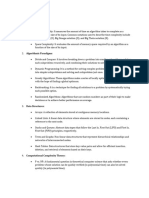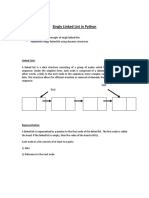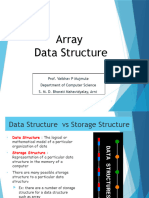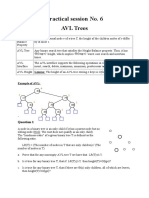0% found this document useful (0 votes)
45 views4 pagesDSA Complete Guide
This document is a comprehensive guide to Data Structures and Algorithms (DSA), covering various topics such as arrays, linked lists, stacks, queues, trees, graphs, sorting and searching algorithms, recursion, backtracking, dynamic programming, and more. It includes definitions, examples, time complexities, and applications for each data structure and algorithm. Additionally, it explains concepts like time and space complexity with common complexity notations.
Uploaded by
Manvendra FauzdarCopyright
© © All Rights Reserved
We take content rights seriously. If you suspect this is your content, claim it here.
Available Formats
Download as PDF, TXT or read online on Scribd
0% found this document useful (0 votes)
45 views4 pagesDSA Complete Guide
This document is a comprehensive guide to Data Structures and Algorithms (DSA), covering various topics such as arrays, linked lists, stacks, queues, trees, graphs, sorting and searching algorithms, recursion, backtracking, dynamic programming, and more. It includes definitions, examples, time complexities, and applications for each data structure and algorithm. Additionally, it explains concepts like time and space complexity with common complexity notations.
Uploaded by
Manvendra FauzdarCopyright
© © All Rights Reserved
We take content rights seriously. If you suspect this is your content, claim it here.
Available Formats
Download as PDF, TXT or read online on Scribd
/ 4



























































































